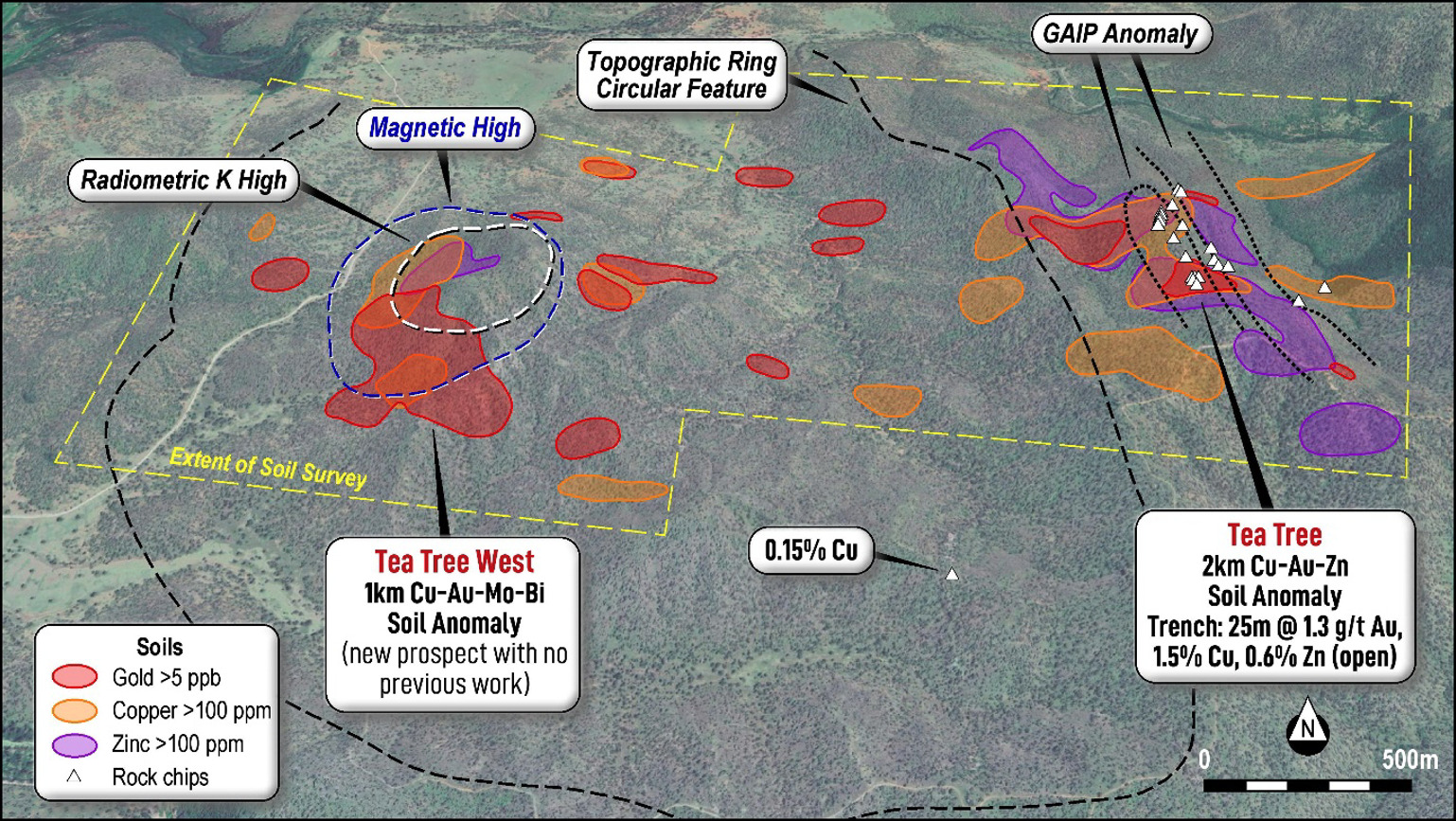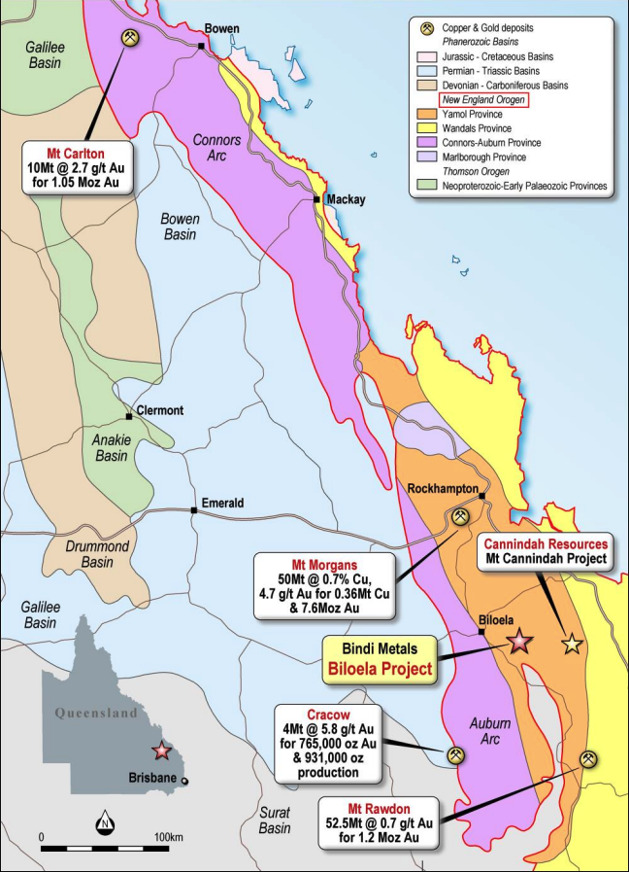Bindi Metals lands on untouched 2km long copper soil anomaly at copper-gold play
Mining
Mining
Special Report: Significant copper potential has been demonstrated at Bindi Metals’ Tea Tree prospect area within the expanded tenure of the Biloela project in Queensland with the identification of a 2km long copper-gold-zinc soil anomaly, with high grade Cu-Au-Zn at surface, during a regional soil program and gradient array IP survey.
Bindi Metals (ASX:BIM) listed in June 2022 with its Biloela copper project in central Queensland’s highly prospective New England Belt, about 40km west of Cannindah Resources’ (ASX:CAE) flagship copper project and 100km north of Evolution Mining’s (ASX:EVN) Mt Rawdon mine.
The explorer expanded its footprint at Biloela to a total 456.2km2 after acquiring 100% of the issued capital of Lark Resources – the holder of EPM 28063 and EPM 28005, adjacent to BIM’s EPM 27478 – in June.
Tea Tree is located 15 km north of the 2022 maiden drill program within the expanded tenure of the Biloela project and just 8 km north of Argonaut Resources’ 5 Mt at 2% zinc and 1Mt at 1% copper Kroombit deposit. The copper-zinc Kroombit deposit also contains an exploration target of 1 – 1.5 Mt at 1.5 – 2% zinc and 0.5 – 1Mt at 0.7 – 1.3% copper. The Kroombit mining licence and mineral development licence are excised from Bindi’s exploration tenements.
Resampling of historical trenches returned 25m at 1.3 g/t gold, 1.5% copper, 0.6% zinc that remains open and up to 6.9 g/t gold, 6.1% copper, 1.8% zinc along the 2 km soil anomaly. An addition historical trench, 350 m south of the previous result was also resampled with results of 12 m at 1.9% copper that also remains open. These significant results have further enhanced Biloela’s regional potential.
Results from a regional soil program and gradient array induced polarization survey have further demonstrated extensive anomalism at the Tea Tree prospect, uncovering a 2km copper-gold-zinc soil anomaly associated with a 1km gradient array IP anomaly.

A second anomalous zone, 200m east of Tea Tree, also returned a 1.1kmcopper-zinc soil anomaly associated with a 1.4km gradient array IP chargeability anomaly as well as historical rock chips grading up to 23% copper and 29% zinc.
BIM says a new prospect has been identified at Tea Tree West with a 1km copper-gold-molybdenum-bismuth soil anomaly associated with a bullseye magnetic high and radiometric potassium anomaly, in an area that has seen no previous exploration. According to models produced by renowned geochemist Scott Halley this zone at Tea Tree West has the hallmarks of the upper ore zone of a porphyry copper deposit
BIM executive director Henry Renou says the results highlight the significant potential for a new porphyry copper-gold system within the highly prospective Connors Arc Terrain.

“This is a proven terrain that hosts world class deposits such as the 8Moz Mt Morgan copper-gold deposit,” Renou says.
“Extensive soil and IP anomalies at Tea Tree as well as the newly discovered zone at Tea Tree West are highly encouraging and represent significant potential drill targets which, surprisingly, have never been drill tested.”
Fieldwork has been prioritised to extend the soil program and collect rock chips and other geological information from Tea Tree West when weather permits.
BIM has been conducting a regional soils and gradient array induced polarisation (GAIP) program during the dry season over several prospects within Biloela’s 456km2 tenement package, forming the basis for planning a potential regional drill program.
This article was developed in collaboration with Bindi Metals, a Stockhead advertiser at the time of publishing.
This article does not constitute financial product advice. You should consider obtaining independent advice before making any financial decisions.